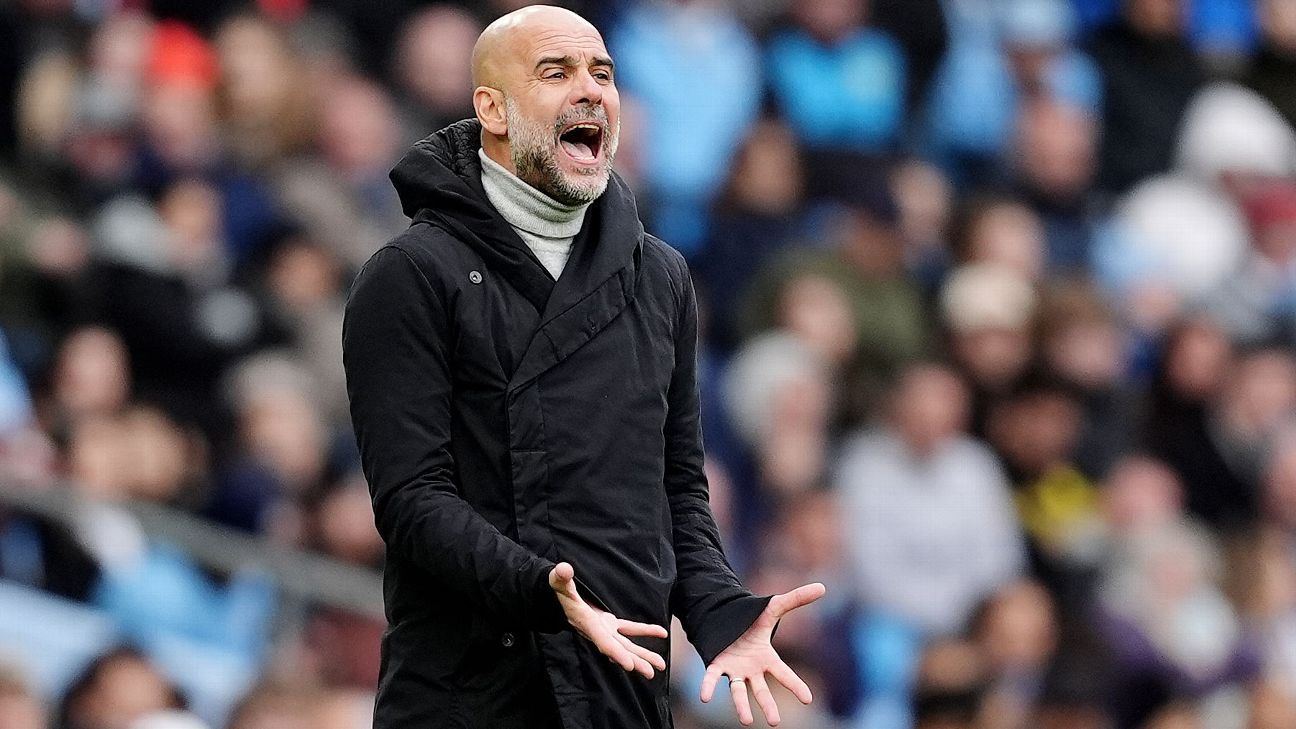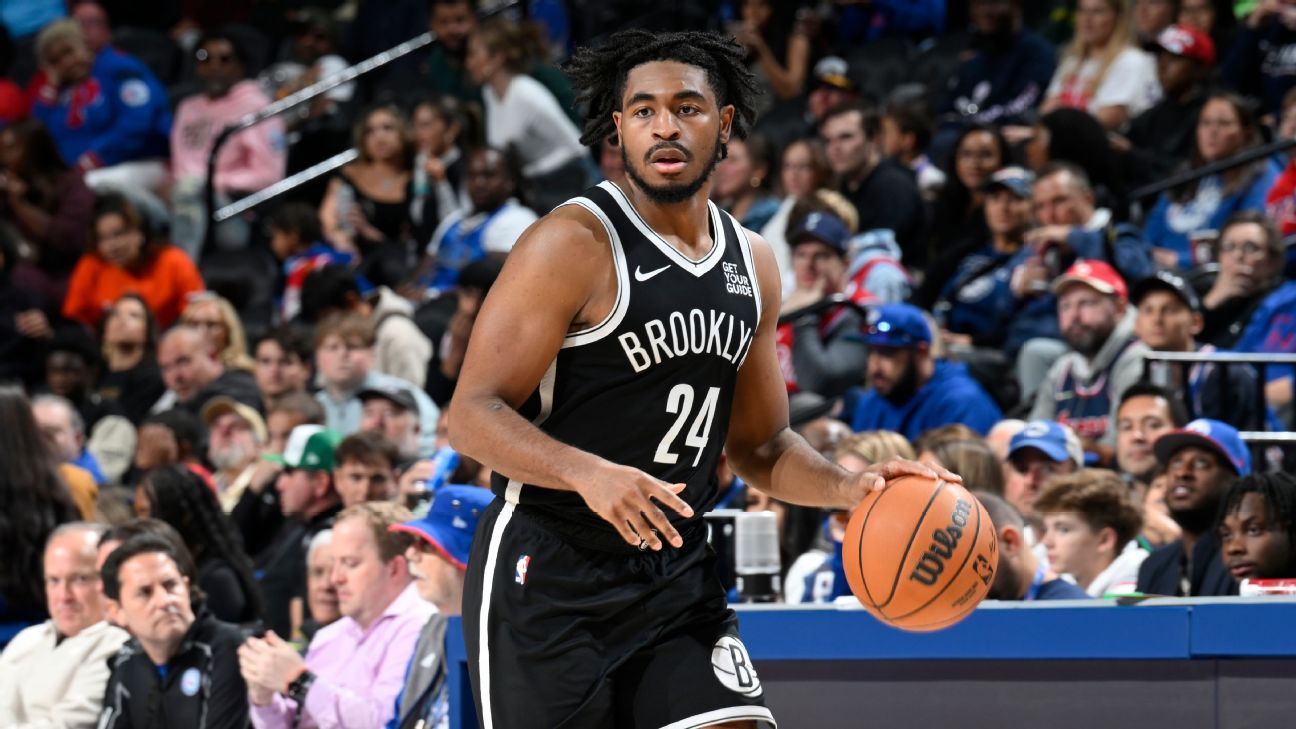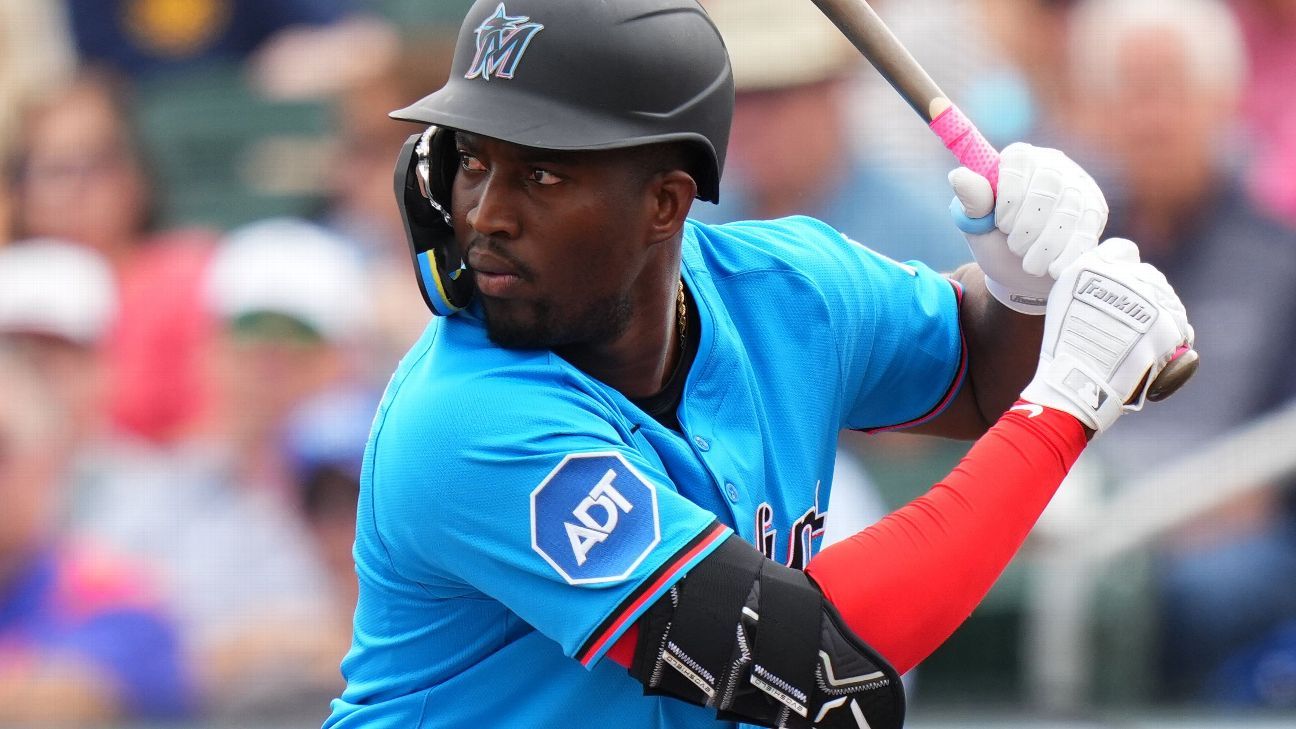I Dig Sports

The SPEED SPORT Power Rankings are back with a new edition! Were there any big movers or shakers in the Power Rankings this week? Click below to find out!

DAYTONA BEACH, Fla. – It pays to win and in 2020, winners will be paid more than at any time in NASCAR Pinty’s Series history.
NASCAR today announced an increase in the winner’s purse, paying a minimum of $10,000 to each event winner. The Grand Prix de Trois-Rivières (GP3R) winner will earn $11,000. Ohsweken Speedway, in conjunction with series entitlement partner Pinty’s, will feature a winner’s purse of $25,000 to honour the track’s 25th anniversary.
“As the NASCAR Pinty’s Series prestige grows, the stakes continue to rise,” said Brandon Thompson, NASCAR Managing Director of Touring Series. “The series attracts the top drivers and teams in Canada, and the winner’s purse increase will further strengthen the level of competition.
“We’re grateful for the collaboration with our track partners and expect to see even more of the side-by-side racing and close, exciting finishes that the Pinty’s Series has consistently delivered to our fans.”
The Ohsweken Speedway race on Tuesday, Aug. 18 will be the first dirt race in series history. Dirt track stars Kenny Wallace and Niagara-on-the-Lake native Stewart Friesen, who won a World of Outlaws Sprint Car Series race there in 2015, have already announced their intentions to compete.
“Motorsports is seen by 26% of Canadians as one of their favourite sports,” said Tony Spiteri, Pinty’s Delicious Foods Vice President of Marketing. “It goes without saying that these fans are similar in many ways to the loyal following of Pintys. Investments in making the sport even bigger is simply good business, and great fun. As we say all the time, ‘Pintys: Making Great Food Fun’.”
The 2020 Pinty’s Series schedule features 13 races at 10 tracks in four provinces (Ontario, Quebec, Alberta and Saskatchewan). The season opens Victoria Day weekend at Canadian Tire Motorsport Park and finishes at Jukasa Motor Speedway on Sept. 26.
Last year, NASCAR and GP3R announced that race would extend from 50 laps to 60 beginning in 2020. The 10 extra laps will force teams to add fuel and provide more strategy opportunities.

CONCORD, N.C. – In an effort to bolster Speedway Children’s Charities’ on-going goal of helping children in need across the country, the far-reaching nonprofit on Monday announced two new hires.
Lisa Starnes, previously the director of Speedway Children’s Charities’ Charlotte chapter, will assume the role of the nonprofit’s national executive director. Kelly Watts will succeed Starnes as director of the Charlotte chapter.
“Speedway Children’s Charities is devoted to helping children in need,” said Jessica Fickenscher, the chief experience officer for Speedway Motorsports. “Giving Lisa and Kelly these new opportunities perfectly positions Speedway Children’s Charities to provide a more wide-ranging, positive effect on children both in the Charlotte community and the country at large.”
In her new role, Starnes will manage and oversee the wide-ranging efforts of the Speedway Children’s Charities chapters at Atlanta Motor Speedway, Bristol Motor Speedway, Charlotte Motor Speedway, Las Vegas Motor Speedway, Kentucky Speedway, New Hampshire Motor Speedway, Sonoma Raceway and Texas Motor Speedway.
Starnes joined Speedway Children’s Charities as the Charlotte chapter’s director in October of 2012 after an immensely successful 20-year career in the telecommunications field, in which Starnes specialized in sales, account management and senior service management.
Watts previously served as the manager of business development for Speedway Motorsports and has been a member of the speedway family since joining the Performance Racing Network in 2002. In her new role, Watts will be responsible for developing fundraising strategies, identifying and cultivating potential donors, and providing resources and services for individuals in need in the Charlotte community.
Watts has been instrumental in championing and implementing the charitable initiatives of Charlotte Motor Speedway’s team of volunteers known as the Pit Crew. In 2018, Watts helped spearhead and facilitate Charlotte Motor Speedway’s inaugural Day of Service, a volunteer-driven, company-wide initiative to benefit local service organizations.
Since its founding in 1982 by the O. Bruton Smith family, SCC has awarded in excess of $58.3 million to nonprofit organizations throughout the nation.

SONOMA, Calif. – Sonoma Raceway’s drag strip heats up for another thrilling racing season, with more than 30 days of intense drag racing slated for the wine country facility.
The NHRA Sonoma Nationals will highlight the schedule for the 33rd consecutive year, as the Mello Yello Drag Racing Series returns for its only stop in Northern California. NHRA Division 7 Drag Races, Summit ET Bracket drag racing and the popular Wednesday Night Drags program also return to the drag strip throughout the 2020 season.
New this year, Sonoma Raceway will host the inaugural Gold Rush Big Bucks Bracket Drags, July 2-5. More than 250 drag racers will compete for a $10,000-$20,000 purse per day over the course of the three-day event, which will be run by Kyle Seipel, who is best known for promoting mega-buck Fling events around the country.
The 11,000-horsepower machines of the NHRA Mello Yello Drag Racing Series bring sensory overload to Sonoma as the world’s best drag racers go head-to-head in the world’s fastest race cars, reaching speeds over 330 mph, July 24-26.
The NHRA Division 7 Drag Races, presented by Korbel, set the stage for back-to-back weekends of drag racing in Sonoma, July 16-19. The NHRA Lucas Oil Drag Racing Series returns to Sonoma for a double-header event, featuring both a regional and divisional event for sportsman racers in one weekend. More than 500 drag racers will compete at two separate events; the first will span Thursday-Friday, with the second event on Saturday and Sunday. The event will feature the Top Alcohol Dragster and Funny Car classes for the second time at Sonoma Raceway in over a decade.
The raceway’s popular Wednesday Night Drags program enters its 32nd season this year, running most Wednesdays from March 11-Nov. 18. The amateur drag racing competition gives anyone with a driver license and a car that passes a simple technical inspection a chance to race down the quarter-mile drag strip. The fan-favorite Top the Cops™ program, which gives teens the chance to race against law enforcement officers, who compete in full uniform in their official vehicles on the quarter-mile drag strip, will run from April through August in conjunction with Wednesday Night Drags.
Throughout 2020, the Summit ET Bracket Drag Racing Series will feature eight races, including five classes of sportsman competition and generally attract more than 300 competitors.

INDIANAPOLIS – Less than two months after the contract between McLaren and Fernando Alonso expired, the two are back together again and this time they’re ready to take care of some unfinished business in the Indianapolis 500.
McLaren, which became a major ownership partner in Arrow McLaren SP last year, will field a third entry for Alonso in the 104th Indianapolis 500. The two-time Formula One World Champion will join Arrow McLaren SP drivers Oliver Askew and Pato O’Ward in a three-car effort at Indianapolis Motor Speedway.
“Clearly, we all have some unfinished business with Alonso at the Indianapolis 500,” McLaren CEO Zak Brown said during Tuesday’s announcement. “We’re looking forward to going to Indy and putting on a competitive showing.”
The driver from Spain is determined to conquer the Indianapolis 500 and win the Triple Crown – the Grand Prix of Monaco, the 24 Hours of Le Mans and the Indianapolis 500. He has won the first two, but Indy is the missing jewel.
“I am a racer and the Indy 500 is the greatest race in the world,” Alonso said when the deal became official on Tuesday. “I love the incredible fans who make it so special for all of us drivers and make me want to come back. I have maximum respect for this race and everyone who competes in it and all I want to do is race against them and give my best, as always.
“It was important for me to explore my options for this race, but Arrow McLaren SP has always been at the top. I have a special relationship with McLaren; we’ve been through a lot together and that creates a bond, a loyalty that is strong.
“But more than that, I am impressed with how the new organization and operation is developing into a strong package with the Chevrolet partnership. The team has experienced, well-qualified people and great resources, and I’m confident we can be competitive.
“I’m focused and excited to begin our preparations. It will also be great to work with Oliver and Pato, two fantastic young talents for the future who are growing all the time.”
McLaren and Alonso partnered with Andretti Autosport for the 101st Indianapolis 500 in 2017. The partnership was a smashing success as Alonso qualified fifth, led 24 laps in the race and was in contention for the victory until the engine in Alonso’s car failed 21 laps from the finish.
Alonso returned to Indy last year in a full-fledged McLaren effort. They failed to make the field of 33, with Alonso the last driver knocked out of the field during the Last Row Shootout.
Alonso attempted to put a deal together with Andretti Autosport for Indy this year, but that never reached completion for a variety of circumstances. One reason was Honda Japan no longer wants to do business with the driver after disparaging comments were about Honda’s Formula One engine. Also, according to team owner Michael Andretti, terms between the driver and team could not be met.
In addition to winning the Formula One World Championship twice in his career, Alonso is also a World Endurance Champion, two-time winner of the 24 Hours of Le Mans and winner of the Rolex 24 at Daytona.
He will drive the drive the No. 66 Ruoff Mortgage Arrow McLaren SP Chevrolet in his quest for motorsport’s elusive and prestigious Triple Crown.
Ruoff Mortgage was Takuma Sato’s sponsor when he became the first driver from Japan to win the Indianapolis 500 in 2017.
The pairing reunites Alonso with McLaren. The contract between the two officially ended on Dec. 31, 2019. He served as a McLaren Ambassador last year in Formula One and did not compete in any F-1 events.
“We’ve always said we’re open to running Fernando in a third car for the 500, so we’re delighted he’s decided to join us,” said McLaren Chief Executive Officer Zak Brown. “Fernando is one of the greatest drivers in the sport and it’s fantastic to have him as part of the team. It’s a fine way to contest our first Indy 500 as Arrow McLaren SP and to have Ruoff Mortgage backing Fernando is a perfect partnership.”
Sam Schmidt is co-owner of Arrow McLaren SP and spoke of the decision to increase to three cars for the Indy 500.
“Adding Fernando to the team brings a level of experience and expertise that will benefit our two young, talented full-time drivers in Oliver and Pato,” Schmidt said. “We have fast cars at Indy and fully believe he has the talent to run at the front, not just participate. That, combined with Chevy power and the experience of the team, will make this trio of drivers one of the strongest in the field.
“We’re all very excited to announce Fernando as part of our team for the Indy 500.”

Emergency backup goaltender David Ayres -- a Canadian citizen who is an employee of the Toronto Maple Leafs -- was named an honorary North Carolinian on Tuesday by North Carolina governor Roy Cooper.
Cooper submitted a proclamation honoring Ayres, noting that the 42-year-old Zamboni driver and kidney transplant survivor embodied the state's motto Esse Quam Videri -- which means "to be rather than to seem."
When both of the Hurricanes' goaltenders left Saturday's game versus the Maple Leafs with injuries, Ayres came in as the designated emergency backup. Wearing a Hurricanes jersey and a helmet featuring Toronto hockey decals, Ayres stopped eight of 10 shots to get credit for the 6-3 win.
"The Carolina Hurricanes are currently in a battle for a spot in the National Hockey League playoffs, which will bring greater economic prosperity and further our state's reputation of excellence in sports," Cooper's proclamation read, adding that "David Ayres gave North Carolina hockey fans a memory that we will never forget" and that he "proved to be the personification of 'That's hockey, baby!'"
The Hurricanes flew Ayres to Raleigh on Tuesday after he went on a full-on media blitz Monday -- which included appearances on several ESPN programs, the "Today" show and "The Late Show With Stephen Colbert." During the Late Show taping, Colbert said he pulled a hamstring and asked Ayres to instead announce the show's lineup.
Ayres was honored by the Raleigh mayor and Canes general manager Don Waddell on Tuesday morning and is expected to be recognized during Carolina's game against the Dallas Stars on Tuesday night.
Ayres has been the regular practice goaltender for the Marlies -- the Toronto Maple Leafs' AHL affiliate -- and has appeared at Maple Leafs practices and skills sessions this season. As the emergency goalie, he was available to either team Saturday night, if needed. He was paid $500 as part of his contract and was allowed to keep his game-used jersey.
The NHL's general managers have their annual spring meetings next week in Boca Raton, Florida, where they are expected to discuss the emergency backup policy and whether there should be any amendments.
On Monday, Toronto GM Kyle Dubas told reporters that his team was in a "no-win situation" once Ayres came in.
"If we won the game, that would be embarrassing as well, because you're down 4-1 and then it would be a whole other set of controversy that would come up," Dubas said. "Like, 'Ah geez, the Maple Leafs [beat their] own employee.' We were in a no-win situation."
Golf Central Podcast: Patrick Reed once again distills criticism into victory

In the latest edition of the Golf Central Podcast, Will Gray and Nick Menta look back at Patrick Reed's WGC-Mexico Championship win, Reed's likely place on the U.S. Ryder Cup roster, and Bryson DeChambeau's apparent kinship with the controversial Captain America.
They also discuss Viktor Hovland's breakthrough win in Puerto Rico, Josh Teater's tearful defeat and look ahead to the week that will be at the Honda Classic. Listen in:
Tiger Woods to serve fajitas and sushi at Masters Champions Dinner

Act like you’ve been there.
Well, Tiger Woods has been there, and he is indeed acting like it with the Champions Dinner he intends to serve at the Masters.
The five-time Masters champion explained during a conference call with reporters Tuesday that he plans to serve a familiar menu at the game’s most exclusive dinner party.
“Being born and raised in SoCal, having fajitas and sushi was a part of my entire childhood, and I'm going back to what I had in 2006,” Woods said. “So, we'll have steak and chicken fajitas, and we'll have sushi and sashimi out on the deck, and I hope the guys will enjoy it.”
Woods also said he’s considering serving milkshakes for desert like he did during the 1998 dinner.
“That was one of the most great memories to see Gene Sarazen and Sam Snead having milkshakes that night in '98,” he said.
Ben Stokes, Jos Buttler collect royal honours at Buckingham Palace ceremony

England's World Cup celebrations have continued with Ben Stokes and Jos Buttler collecting honours at Buckingham Palace.
The pair were named alongside their World Cup-winning captain, Eoin Morgan, coach, Trevor Bayliss, and Joe Root on the New Year's Honours list and received their awards from the Duke of Cambridge, Prince William.
Stokes, who also won the BBC Sports Personality of the Year Award in December, was made an OBE for services to cricket and Buttler was made an MBE following a remarkable year for the England team, who beat New Zealand to win the men's World Cup for the first time in the most thrilling of finals at Lord's.
Stokes struck an unbeaten 84 in the final - including two sixes in the last over - to tie the game, and then batted in the Super Over to help England to a memorable triumph. Stokes also hit a stirring 135 not out to hand England victory in the third Ashes Test at Headingley. Meanwhile, it was Buttler who featured in the decisive moment of the World Cup when he gathered Jason Roy's throw and completed the run-out of Martin Guptill, which meant England won the title on boundaries scored.
The pair were joined at Buckingham Palace on Tuesday by Colin Graves, chairman of the England and Wales Cricket Board, who was recognised with a CBE for services to the sport.
"Without a shadow of a doubt, it's two great players and to share the day with them is brilliant," Graves told the Press Association. "You just have to look at the Sports Personality of the Year awards, Stokesy won the main award, the team won the team award, the team won the moments of the year award."
Morgan is due to be appointed a CBE and Root is to be made an MBE, while Bayliss will be made an OBE.
Brady was 'deeply affected' by death of Kobe

FOXBOROUGH, Mass. -- New England Patriots quarterback Tom Brady shared a five-paragraph essay Tuesday that he wrote about how he has been "deeply affected" by the death of Kobe Bryant, Bryant's daughter Gianna, and seven others in a January helicopter crash.
In the piece posted on social media titled "What's really important?" Brady wrote that after witnessing the "outpouring of love and support for the families that had so much left to give," it has helped him reflect and gain perspective. He shared that the tragedy has kept him up at night and led to many tears.
— Tom Brady (@TomBrady) February 25, 2020
Brady posted the essay one day after a celebration of Bryant's life in Los Angeles included touching remarks from Bryant's widow, Vanessa, as well as basketball stars Michael Jordan, Shaquille O'Neal and Diana Taurasi, among others.
"In Kobe, we were able to witness the man in the arena. For many of us, sports show what we are made of, they define our personalities and emotions. We cannot hide from the good or the bad, from the wins or the losses ... the joy and despair, the happiness and the pain," Brady wrote.
"What you see is what it is, we aren't actors. We have found a real life stage where we become vulnerable to the world and are judged based on the outcome of each performance. And we care deeply about what we do.
"For some, these days are the pinnacle of their life, and there's nothing wrong with that, but it's clear to me, for Kobe, that was how he lived his life in every way. In his second chapter, you saw even more."
Brady noted how Bryant "had the energy to recognize in others what they could not recognize in themselves."
"I think that's why I will miss him most," Brady wrote, later calling Bryant a "real superhero our world needs.
"That's why we hurt. Because we know that he was always fighting against the norm. He was doing more than his share. Now who is going to do the work that is still here to be done? Who is going to fight and break the norms with love and joy and inspiration? Who is going to discard fear, and doubt, and hate? Who is going to carry the load and be the superhero that he was?
"The answer is simple to me, ALL OF US. Decide to make the change in yourself. If there is anything I have learned and been inspired by through this tragic event, it is this, SEIZE THE DAY. That's what Kobe always did, and that's what he wanted for us too."















 Phone: (800) 737. 6040
Phone: (800) 737. 6040 Fax: (800) 825 5558
Fax: (800) 825 5558 Website:
Website:  Email:
Email: 






